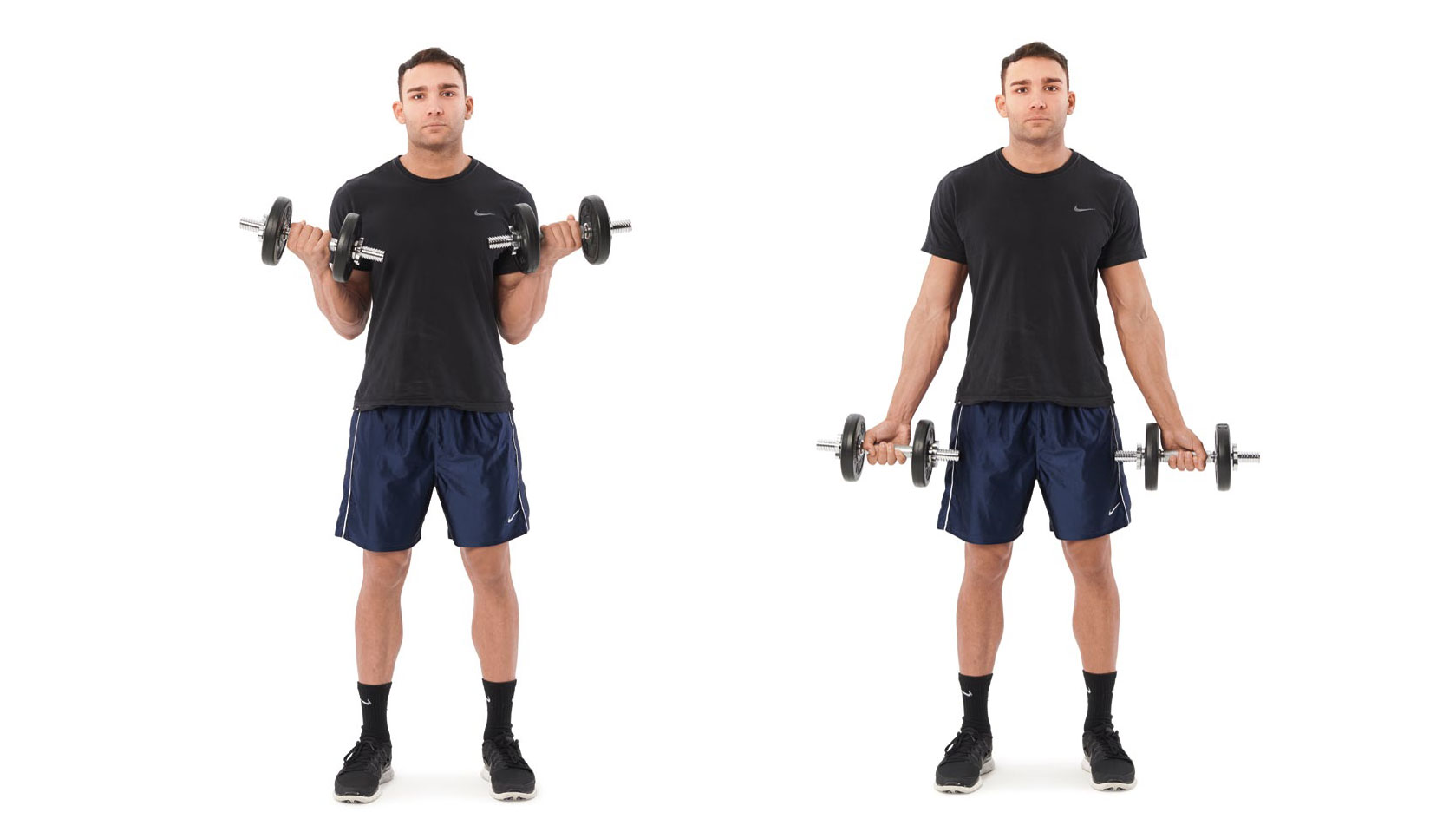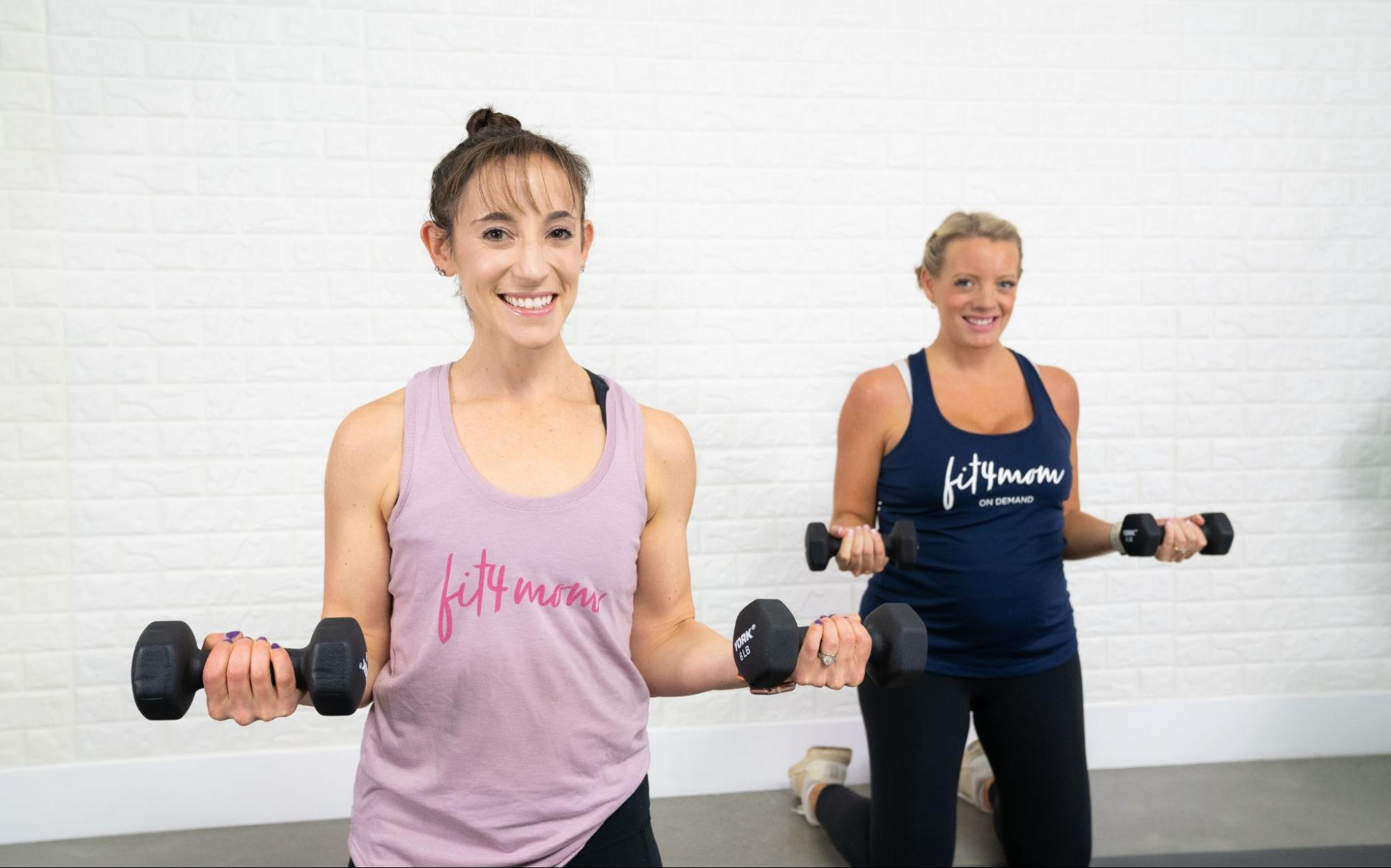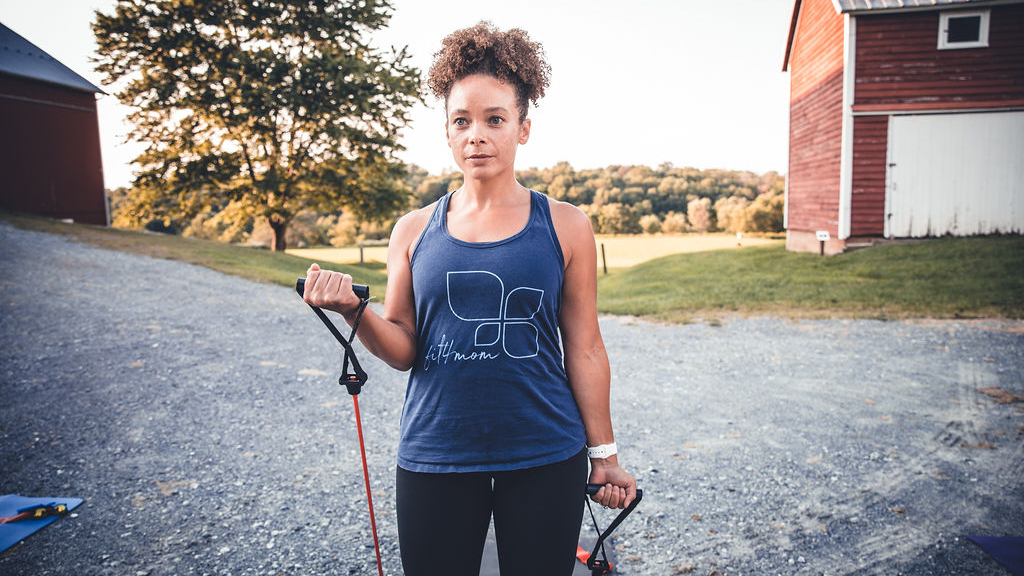You only need one move and a set of dumbbells to build stronger arms — here's how
We asked a personal trainer how to do a biceps curl, if you really need weights, and how to modify this staple move


Biceps curls are one of the go-to exercises many beginners add to their workout routine. The movement is simple and intuitive, and consistently performing biceps curls can help you get more muscular and stronger arms, which is why it's often touted as one of the best biceps workouts you can do.
With that said, it is still really important to learn how to do a biceps curl properly, and if you are a beginner, you might have questions about the correct technique and whether you should be using dumbbells, resistance bands, or some other form of weights when you are doing biceps curls.
To learn more about how to do biceps curls properly and why you should incorporate this exercise into your workout routine, we spoke with Jessica Maurer, an ACE-Certified Personal Trainer, Pre & Postnatal Exercise Specialist, and the Director of Operations & Product at FIT4MOM.

Jessica Maurer is a personal trainer certified by the American Council on Exercise (ACE) and the Director of Operations and Product at FIT4MOM, a pre and postnatal fitness platform. She has created and presented certifications and workshops internationally for IDEA World, SCW Mania, canfitpro, AsiaFit, and FitnessFest.
How to do a biceps curl

Maurer walked us through how to do a traditional biceps curl with dumbbells. Be sure to take time to focus on your technique before taking on a full set. It's also important to warm up first.
- Start with your hands down by your sides, holding the weights with your palms facing forwards.
- Inhale, rolling your shoulders down so that your chest is lifted and you are standing with good posture.
- Exhale, contracting your core as you bend your elbows to bring your palms up towards your shoulders.
- Inhale, slowly lowering the weights back down.
How to do a biceps curl for beginners
Maurer says it's critical to use your muscles to do the work of the exercise, not momentum. "In other words, do not swing the weights — use control as you curl your arms up and release back down.
"If you begin to swing the weights past your hips to gain momentum to curl, then the weight is too heavy, or you have reached fatigue," explains Maurer.
"In this case, you should stop the exercise and take 2-3 minutes to rest before trying again. If you still have to swing the weights with each curl, you need to use a lighter set of weights or use a resistance band instead."
Start your week with achievable workout ideas, health tips and wellbeing advice in your inbox.
Maurer recommends that if you are a beginner using weights and unsure where to start, it might be worth investing in a set of adjustable dumbbells to start lighter and increase the weight as you get stronger.
"It's better to start with light weights and increase them than start too heavy and risk injuring yourself," advises Maurer. "You can also start biceps curls using a resistance band."
She also explained how to do a biceps curl with a resistance band:

- Start by stepping on the resistance band with both feet, with one handle of your band in each hand.
- Inhale, rolling your shoulders down so that your chest is lifted and you are standing with good posture.
- Exhale, contracting your core as you bend your elbows to pull the band up your shoulders.
- Inhale, slowly lowering the band back down so that your arms are at your sides.
Which muscles do biceps curls work?

The primary muscle worked by biceps curls is the biceps brachii, the muscle in the front of your upper arm. "It was named 'biceps' because [it has] two heads, a long and a short. [So] biceps is both singular and plural.
"In other words, a single head of the muscle is described as biceps, not bicep," Maurer says. "The two parts of your biceps work together in unison. You cannot separate the heads nor isolate one over the other."
The primary function of the biceps is to flex the elbow, which Maurer says translates to many everyday tasks in real life. "We are continuously picking and putting things down, movements that activate the biceps and require them.
"Biceps are needed to do things as simple as lifting a glass of water to drink, turning a doorknob, holding a child, carrying shopping bags, or bringing in boxes from your front porch," notes Maurer.
What are the benefits of biceps curls?
Knowing the benefits of any exercise can increase your motivation to perform the movement. The good news is that the benefits of biceps curls go beyond just giving you shapely arms that look great when you flex.
"Biceps curls will make your upper arms stronger while helping your shoulders and core muscles become better stabilizers. Stronger arms will make daily life tasks much easier while helping protect your joints for your future use," explains Maurer.
"Healthy shoulders and core muscles will help you maintain better posture and decrease back pain." If you want to isolate this single move to see the results, try this 50 biceps curls a day challenge to build strength.
Are biceps curls better with weights or resistance bands?

Many beginners aren't sure whether they should be doing biceps curls with resistance bands, dumbbells, barbells, or weight machines. Maurer says that each type of exercise equipment has its benefits, and there isn't necessarily a 'right' or 'wrong' kind of resistance to use
Instead, consider your goals, space, cost limitations, and what type of equipment you have available. Keeping things varied by performing biceps curls with different equipment will provide your muscles with a slightly different stimulus, which may help increase the effectiveness of your biceps exercises.
"Bands provide a level of resistance throughout the exercise, they are portable and lightweight, and they are easy to use. However, dumbbells and barbells allow you to pull more weight while increasing the strength of your muscles," contrasts Maurer.
"The most important aspect of a biceps curl is that you do them consistently to see improvement and build strength."
How to modify your biceps curls
If you want to modify your biceps curls, you can adjust your grip position, how you hold the weights, and the move's timing, tempo, and coordination. "Biceps curls can be done with one arm only, alternating one arm at a time, or with both arms together," suggests Maurer.
"You can do them in a multitude of ways, but the most common are: traditional grip (front-facing), narrow grip (sometimes called hammers), reverse grip (palms down), and wide (arms rotated outwards)." You can also play around with how slowly you lift and lower the weights.
According to research published in the BioMed Research Internationaljournal, an exercise's eccentric, or lowering portion, is especially beneficial for building strength and muscle mass. Therefore, you can extend the duration of the lowering portion as much as possible.
Maurer adds that performing the exercise with one arm at a time also has benefits since it better replicates many everyday movements. "Life happens unilaterally, which means one-sided.
"Think about how you carry your bags or suitcases, how you carry a baby, or even how you hold your phone — it's mainly on one side of your body," she notes. "So training your biceps in various ways helps you perform daily movements more safely."
When you're ready to turn things up a notch, Maurer suggests performing lower-body exercises like squats or lunges simultaneously with biceps curls to turn the move into a multi-muscle compound exercise to build strength, raise your heart rate, and work your whole body.
Amber Sayer is a Fitness, Nutrition, and Wellness Writer and Editor, and contributes to several fitness, health, and running websites and publications. She holds two Masters Degrees—one in Exercise Science and one in Prosthetics and Orthotics. As a Certified Personal Trainer and running coach for 12 years, Amber enjoys staying active and helping others do so as well. In her free time, Amber likes running, cycling, cooking, spending time outside, and tackling any type of puzzle.
